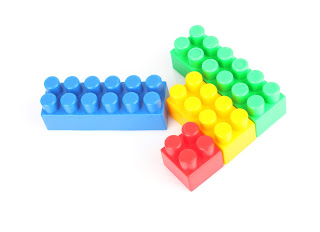Why is organizational climate so vitally important as we set
the context for innovation?
This was one of the key messages that came through so strongly
at the Creative Problem Solving Institute 2013 conference in Buffalo, USA.
The climate of the organisation is not the same as the
culture and it is important that we measure it. Once we have some hard data on
what the climate is, this enables us to explore ways that leaders can influence
positive climate change and leverage it to boost performance and promote creative
thinking.
If we do not introduce creative problem solving and innovation
in to a context, there is little chance of success.
What is climate?
What is culture?
Think about what is in your experience a good place to work.
What made it a good workplace?
Examples are - flexibility, location, people, org purpose
alignment, good work in the world, autonomy, play to win, different roles, very
social, build on ideas, work life balance
How does this make you feel?
Examples - energized, engaged, creative, energetic, happy,
useful, valued, part of a whole, world changing.
Then - think about the opposite of that - the bad workplace.
Here are examples of what made it so:
inconsistent expectations, no room for growth, politics, mismatch of skills,
authoritarian leadership, instability, squashing ideas, oppressive, silos,
environment, egos, bland
How does that make you feel?
Examples: frustrated, suffocated, insecure, drained, stressed, abused,
unsatisfied, limited, unappreciated, unchallenged, stuck, idiotic, impatient,
headachy, apathetic.
When you experience the great feelings, how do you
behave: committed, friendly, open,
respectful, loyal, cheerful, willing to take risks, collaborative, part of a
team, inclusive, initiative, sense of pride.
When you experience the bad feelings, how do you
behave? Examples - Procrastinate, not
productive, backbiting, dishonest, secretive, minimal amount of work, sleepy,
sporadic, disruptive, lack of caring, aggressive, sick leave, wanting to
change, only there when i had to be, blame others, paranoid, protest
everything, slouched.
So dare we say that there a correlation between workplace
and performance?
If you compare how people feel and how they perform, there
is a strong correlation. It effects their level of engagement and
retention. The magnitude of this impact
is sometimes underrated.
So to distinguish between culture and climate - culture is
the values, beliefs, traditions and reflects the deeper foundations of the organisation. What the organisation values is reinforced in
the decisions that are made.
Climate is the recurring patterns of feelings and attitudes
and behavior that members of the organisation experience.
A changing climate eventually has an impact of culture. Climate
is more visible, more on the surface and is easier to change.
They are not entirely separate - over time as you impact the
climate, you will impact the culture.
But it is easier to deal with the tree at the top and what is visible
and where there is growth than by messing with the roots of the tree. When you
walk in to an organisation, you can feel the difference.
Uncover your organisation’s climate data to determine what your
current climate is by reviewing the following dimensions:
1. Challenge and involvement – determine what do they do on
day to day basis and how this links and relates to what the purpose of the organisation
is. The more people see the connection,
the more likely they are to be engaged.
2. Measure Freedom - independence of behaviour exerted by
the people such as respecting the individuals and no micro management.
3. Determine the level of trust and openness - emotional
safety in relationships. Is there enough
trust in the relationship to know my short comings. The more productive the environment will be
when people can spit out what they want to.
4. Look at the level of risk taking - how people deal with
ambiguity and uncertainty. Is there a
level of tolerance for uncertainty? We don’t
always have to jump towards dotting the i's and crossing the t's.
5. Ask if there is a climate of debate - occurrence of
encounters and disagreements between viewpoints. Is there open and frank conversation and not a
climate of taking things personally.
6. What level of idea support is there - ideas are respected
and nurtured and not thrown out immediately.
Ideas not killed too soon so that they can move out the door and be
adopted. Novelty will otherwise not
survive.
7. How is conflict managed – there is positive and negative
conflict. Distinguish between conflict
and debate. Conflict results in tension
between people and leads to the deliberate sabotaging of ideas. There are also many cases where organisations
try to avoid the conflict and performance is zero unless the areas of friction
are surfaced.
8. What is the level of playfulness and humour - ability to
behave and interact in a spontaneous way.
Is humour is accepted no matter the level of the person? Great climates weave this playfulness in to work. People work to make play happen.
9.How much play time is there - how much time do we have to develop
and elaborate on new ideas?
These observable and tangible behaviors can be measured. We can
easily see the stagnated organisations that cannot get stuff out the door to
the marketplace.
Climate is the one variable that can be changed – and immediately
innovation has a context and a soil in which to grow. Climate has to be constantly watched – you have
to recreate it every day.
Final notes:
1.
Climate is important and palpable and it is
measurable. When you target it
specifically, you can move the needle on these dimensions.
2.
The climate for innovation is ignored at your
own peril.
3.
This stuff is not soft - it is as hard as you
get!




